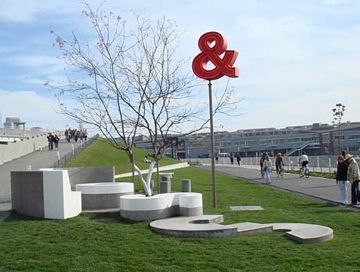As I mentioned last week, Art21’s Education and Public Programs team recently took to Seattle for the National Art Education Association’s annual conference. Over 3,000 educators from across the country came to think about and discuss teaching visual art in today’s schools, classrooms and studios. They also came to take part in an enormous number of workshops offered by the association as well as experience a variety of events we had the pleasure to facilitate, including Mark Dion’s keynote address, a day with Mark at the Neukom Vivarium, a panel discussion about teaching with the Neukom Vivarium, a session detailing the Art21 Educators program, and a team-taught workshop between museum educators and Art21 at the Seattle Art Museum. Sleepless in Seattle, indeed!
As we raced from event to event, there seemed to be some recurring questions that participants were talking about. Those that took center stage included:
- What is the best response to the most recent national attack on art education (and education in general)?
- How can NAEA begin to counter an essentially defensive posture that the organization has taken with regard to the question above?
- How can we as art educators spend less time justifying our existence and more time taking leadership roles in our schools, districts and states, in order to help people understand what we really do?
It was abundantly clear that many participants had begun to think long and hard about whether art education should literally be (or should I say, continue to be?) at the service of other subjects. For example, many elementary art teachers mentioned not wanting to be known as a “prep” for general education teachers, yet this is how many people employed in schools view their work. These teachers, like so many of us, have curriculum they are passionate about and questions they want to explore with their students, yet art education on the elementary level often serves as a programming benefit vs. a rich learning experience the whole school should understand and cultivate.
It was also crystal clear that teachers everywhere are facing huge budget cuts and losses to staff, which has influenced an atmosphere of let’s take what we can get even though we all know very well that taking what we can get doesn’t exactly “advance our profession”. Many teachers are angry, and justifiably so, at the nonsense going on in Wisconsin and other states. Education, and particularly art education, is an easy target for a new form of teetotalism- one that includes abstinence from common sense and a reluctance to think broadly.
Other questions that came up during my time at the conference included:
- How can art educators begin to plan curriculum for a post-studio world? What implications exist as artists continue to move out of working within a studio environment? How does this affect how we plan curriculum and teach about making works of art?
- Where does art education and museum education meet, and how can the two work together more effectively?
- What can a new wave of interdisciplinary thinking and teaching really look and sound like?
- Can art and science be a lot closer to coexistence than we think? (Many thanks to our super-session panelists for making a good case for this, even though, as Mark Dion pointed out, humor, irony and metaphor are tools that scientists just don’t have).
I invite you to weigh in on any of the questions above so that we may continue the conversation and perhaps share some of our ideas with NAEA, our colleagues, and even those shaping educational policy.




